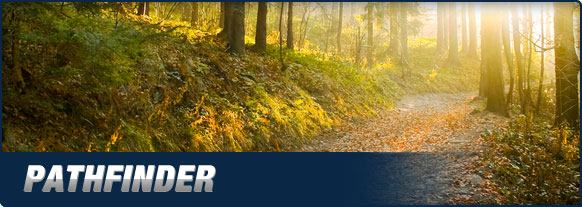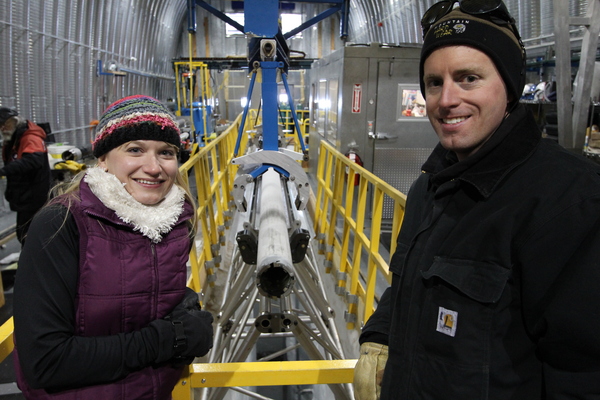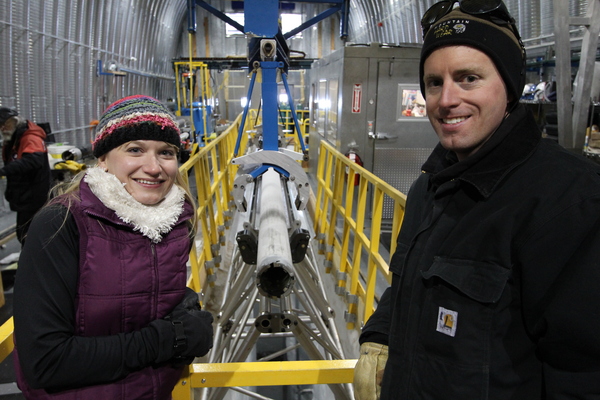BTN.com staff, December 19, 2014

Inspired by their experiences in college and elsewhere, these Pathfinders are passing by the typical, well-trod career paths and blazing their own trails. We?ll explore the unconventional approaches these Big Ten alums are taking to work.

As students at the University of Wisconsin know, it can get bitterly cold in Madison during December. But for Kristina Slawny, who serves as program director of the Ice Drilling Design and Operations (IDDO) arm of Wisconsin?s Space Science and Engineering Center (SSEC), those frigid temperatures might seem downright balmy.
That?s because Slawny?s job takes her to extremely remote locations near the North and South Poles - not exactly standard business trips.
?It?s an amazing experience to travel to the ends of the Earth,? she said.
The massive drills developed by the IDDO can penetrate more than two miles into the thickest ice sheets on Earth. These machines are used to retrieve samples of deep, old ice called ?cores,? which provide scientists with information about our planet and its atmosphere over the course of thousands of years. Researchers analyze the bubbles in these cores and measure the levels of carbon dioxide and other gases that were trapped when the ice formed tens of thousands of years ago.
?Without the ice cores being as pristine as they are, without the drillers being able to take out every single core unbroken to provide us with a 70,000-year record of CO2, we would not be able to understand how this powerful greenhouse gas has affected our planet in the past,? explained Shaun Marcott, an assistant professor of geoscience at Wisconsin.
[btn-post-package]Slawny knows her career path is an unorthodox one. As a senior in 2003 who simply needed a summer job, she applied for a position in shipping and receiving at SSEC. She stayed on after graduation to work in purchasing for the Deep Ice Sheet Coring (DISC) Drill development project for Wisconsin?s Ice Coring and Drilling Services (ICDS, which later became IDDO).
After three years of office work, Slawny expressed interest in joining them in the field on a deployment to Greenland.
?After that, it?s all history,? she said. ?Since that 2006 season, I?ve been to Antarctica for six field seasons - from November through February - and returned to Greenland one more time in 2009 to work with our ice-drilling colleagues from Denmark.?
One of the most memorable experiences for Slawny was working with Charles Bentley, professor emeritus of geology and geophysics at Wisconsin, who saw things no human being had seen before while conducting research in Antarctica during the 1950s. Bentley visited Slawny and her team in January 2010 at West Antarctic Ice Sheet Divide Camp, which marked the seventh decade he?d spent on the ice.
?Quite the amazing accomplishment!? she said of his trip.
Though she and her team have to endure long stretches of time away from family and friends to do their research, each of these journeys is exciting adventure that provides lessons on perseverance, cooperation and hands-on skills. And Slawny and IDDO aren?t planning on slowing down anytime soon.
?IDDO as an organization has developed really good relationships with community ice-coring scientists and there are always new drill-development projects or new field endeavors on the horizon,? she said. ?While we have primarily focused on designing, building and maintaining the National Science Foundation?s fleet of ice-coring equipment during our history as ICDS/IDDO, we are now exploring new areas of drilling, including sub-glacial bedrock coring.?
By Betsy Piland







 See what's coming up live on B1G+ every day of the season at BigTenPlus.com.
See what's coming up live on B1G+ every day of the season at BigTenPlus.com. 